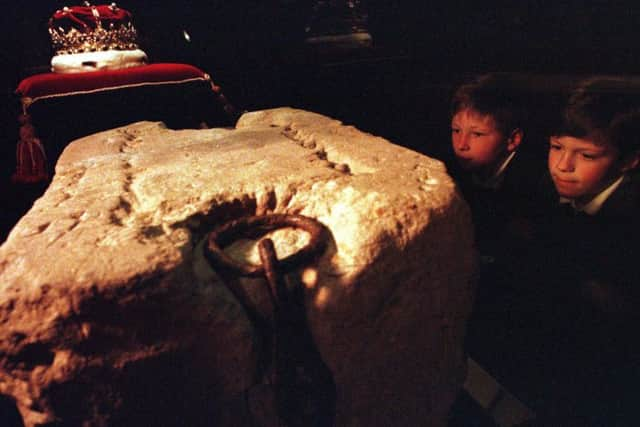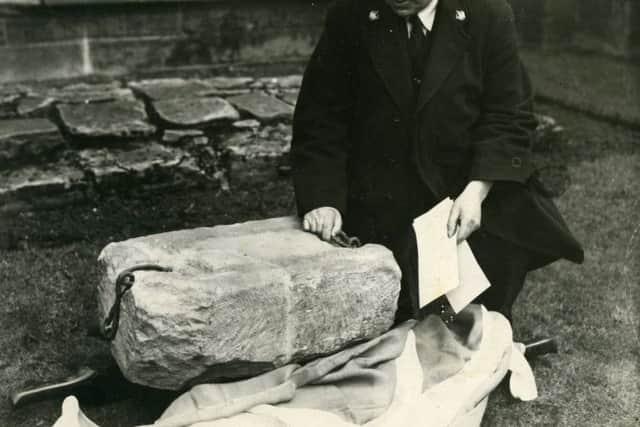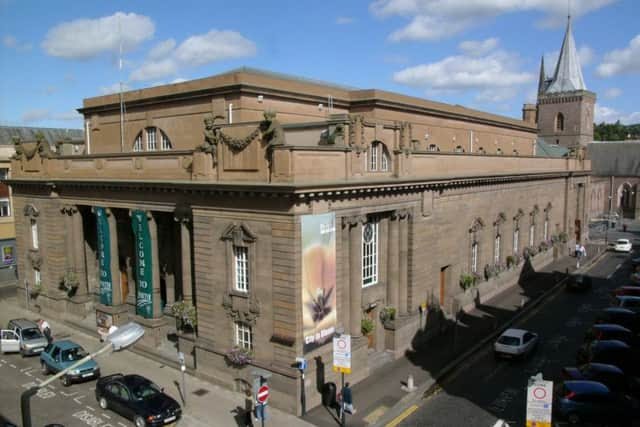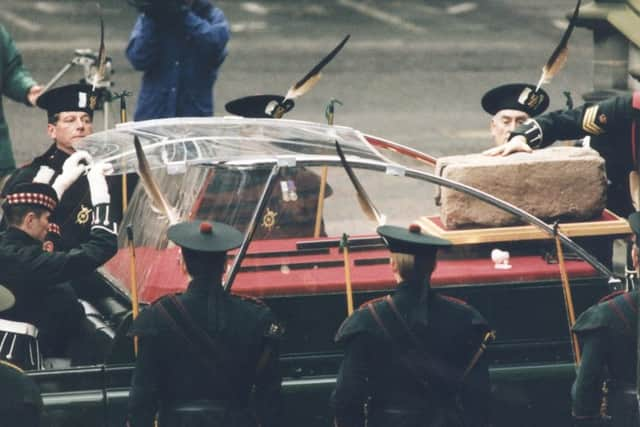SNP heavyweights call for Stone of Destiny to be relocated from Edinburgh to Perth
John Swinney, Pete Wishart and Roseanna Cunningham - who all represent Perthshire constituencies - have lent their support to a multi-million pound project which would see the Stone being taken from its current home in Edinburgh Castle and placed in a refurbished Perth City Hall.
The intervention comes as the Commissioners for the Safeguarding of the Regalia are now seeking public views regarding the future of the Stone.
Advertisement
Hide AdAdvertisement
Hide AdHeritage experts will consider between now and the end of September a bid from Perth and Kinross Council for the Stone to form the centrepiece of the town’s Edwardian town hall, which is to undergo a programme of extensive refurbishment, as well as a proposal for it to remain in the Capital.


Education secretary John Swinney, who represents Perthshire North, said: “I am grateful that the Commissioners are willing to consider the very compelling case for returning the Stone of Destiny to Perthshire
“The Stone of Destiny is widely regarded to have been quarried from Perthshire stone, and was used for the coronation of the Kings of Scotland at Scone for many years. It is therefore highly appropriate that the Stone should return to Perthshire.
“The arguments for returning the Stone to Perthshire are not just historical, but also logistical. Perth is within 90 minutes travel time for over 70% of Scotland’s population, and is therefore ideally located to capitalise on the desire of both Scots and tourists to visit the Stone.


“When the Stone was proposed to be moved from Westminster to Edinburgh Castle in 1996, I campaigned for its return to Perthshire. I am therefore delighted that a significant step has been taken towards achieving this goal, and I am sure that the entire region will get behind this campaign."
Pete Wishart, the MP for Perth and North Perthshire, said: “It is welcome news that consideration is now being given to the Stone of Destiny returning to its ancestral home at the heart of Scotland. I have long supported and championed the claim that Perthshire is the right location for this critically important historical artefact.
“I will be submitting my own view to the consultation strongly in favour of Perthshire’s claim and would encourage those like-minded to do the same.”
If the transfer is agreed, it would begin another chapter in the stone’s long and often turbulent history.


Advertisement
Hide AdAdvertisement
Hide AdIts origins are obscure, but the relic was originally housed in the now demolished Scone Abbey until it was stolen as spoils of war by Edward I of England in 1296 as part of a concentrated effort to crush the medieval Scottish kingdom.
The stone - also known as Jacob’s Pillow - had a powerful ceremonial role in the crowning of ancient Scots kings. It was last used in the coronation of Alexander III in July 1249 before it was seized by an invading English army later in the century.
As a final insult, Edward had the stone installed beneath a specially-designed coronation chair for use of all future English monarchs.
The chair, which sits in Westminster Abbey, is still in use following the Act of Union in 1707 and was last used by Elizabeth II at her coronation in 1953.


Several nationalist-supporting students from Glasgow famously removed the stone from its London resting place on Christmas Day 1950 and returned it to Scotland.
Its theft prompted a national scandal and hundreds of police officers were deployed to find it.
The stone was eventually found on the high altar of Arbroath Abbey - draped in a saltire - in April 1951 and was returned to Westminster.
John Major’s Conservative government announced in July 1996 that the stone would be returned to Scotland where it would go on permanent display at Edinburgh Castle.
Advertisement
Hide AdAdvertisement
Hide AdThere are several well-known theories that the stone in the capital is not the original used by Scots kings. One suggests the monks of Scone buried the real stone to protect it from the advancing English army, while another suggests a copy of the stone was made when it was brought back to Scotland in 1950.
